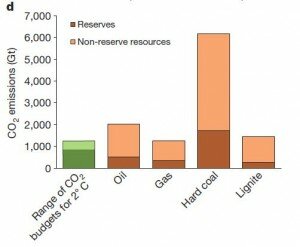You can continue ordering cheap articles online if your future projects will require the same treatment. Our editors follow the same system as before.
On Tuesday, June 26, The Forum for Climate Engineering Assessment will host a webinar, “What We Know and Don’t Know about Negative Emissions.” The webinar will be chaired by Wil Burns, Co-Director of the Forum, and David Morrow, the Forum’s Research Director. Details are provided below. Please do not hesitate to contact me should you have any questions. Wil Burns
Join the Forum for Climate Engineering Assessment for the second installment of our “Assessing Carbon Removal” webinar series, where we will speak with three authors of a recently published systematic review of the carbon removal/negative emissions technologies research field. The study reviewed more than 6,000 documents on seven groups of technologies: bioenergy with carbon capture and storage (BECCS), afforestation and reforestation, direct air carbon capture and storage (DACCS), enhanced weathering, ocean fertilization, biochar, and carbon sequestration in soil. The authors argue that the carbon removal research field does not match the urgency of the large-scale deployment it proposes and call on researchers to expand their studies on pathways to deployment beyond the research and development stages.
The authors will discuss their findings about the state of the research field, propose areas for further research, and answer audience questions.
Dr. Jan Minx is head of the applied sustainability science working group at the Mercator Research Institute on Global Commons and Climate Change, and Priestley Chair of climate change and public policy at the University of Leeds; Dr. Sabine Fuss is head of the sustainable resource management and global change working group at the MCC; and Dr. Gregory Nemet is associate professor of public affairs and environmental studies at the University of Wisconsin at Madison
The webinar will run from 1:00 PM ET to 2:00 PM ET on Tuesday, June 26. Please register here.
Access the first webinar with Dr. Katharine Mach (Stanford University) and Janos Pasztor (Carnegie Council Geoengineering Governance Initiative). Future webinars will discuss the potential role of enhanced soil carbon sequestration, bioenergy with carbon capture and storage, direct air capture, and other technologies and their associated economic, legal, social, and political implications.
Dr. Wil Burns
Co-Executive Director, Forum for Climate Engineering Assessment
A Scholarly Initiative of the School of International Service, American University
2650 Haste Street, Towle Hall #G07
Berkeley, CA 94720
650.281.9126 (Phone)
http://www.dcgeoconsortium.org
Skype ID: Wil.Burns
Blog: Teaching Climate/Energy Law & Policy, https://teachingclimatelaw.org

 As a number of recent studies have emphasized, projected global temperatures will largely be determined by cumulative emissions of greenhouse gas emissions over a given period of time. In
As a number of recent studies have emphasized, projected global temperatures will largely be determined by cumulative emissions of greenhouse gas emissions over a given period of time. In